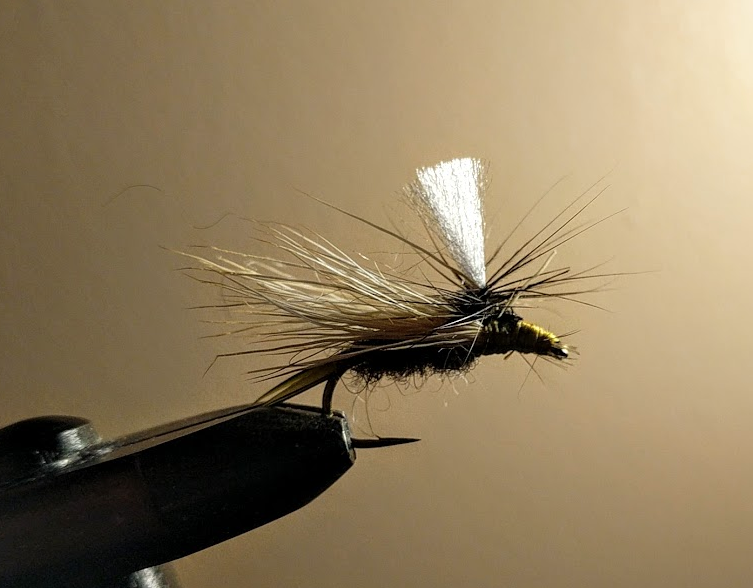Tying parachute-style flies can help anglers see the dry flies they’re fishing.
This time of year, particularly on backcountry streams or during prolific big-bug hatches (think big salmonflies, for instance), it’s often just as important for you to see your fly as it is for the fish you’re after to track your offering.
As I’ve gotten a bit older, it’s become even more important for my fly to be visible—aging eyes not only impact us older folks at the vise, but also on the river. I’ve come to fall back on two solutions that help me see and track my dry flies better.
- Tie and use flies with parachute posts. This is particularly helpful in busy water with heavy currents. Darker flies, like salmonflies, for instance, no matter how big they are, can disappear in heavy water. A simple parachute-style tie for flies that might otherwise blend in with darker water can make your fly pop and help you see it and, more importantly, detect a rise.
- Consider two dry flies. The first should be something big and gaudy, like a Chernobyl or a big ‘hopper. The fly you’re counting on, though, should trail the lead fly by about 18 inches or so. This gives you perspective—you’ll see your big fly, and know that your smaller, match-the-hatch fly is trailing just a ways behind it. Rises that happen behind the bigger fly should elicit a hook-set. The benefit of this? There’s always a chance a hungry trout will hit the big fly. It gives you a better chance at a fish.
Of the two, I likely prefer the former. Casting two flies against banks and in places where willows or alders might hang over the water not only increases your chance at catching fish, but also at catching branches and snags. I find that tying parachute-style flies is ideal for smaller water where precision is vital. But, honestly, either method helps achieve the desired outcome: they both help me see the flies I’m fishing.
— Chris Hunt



